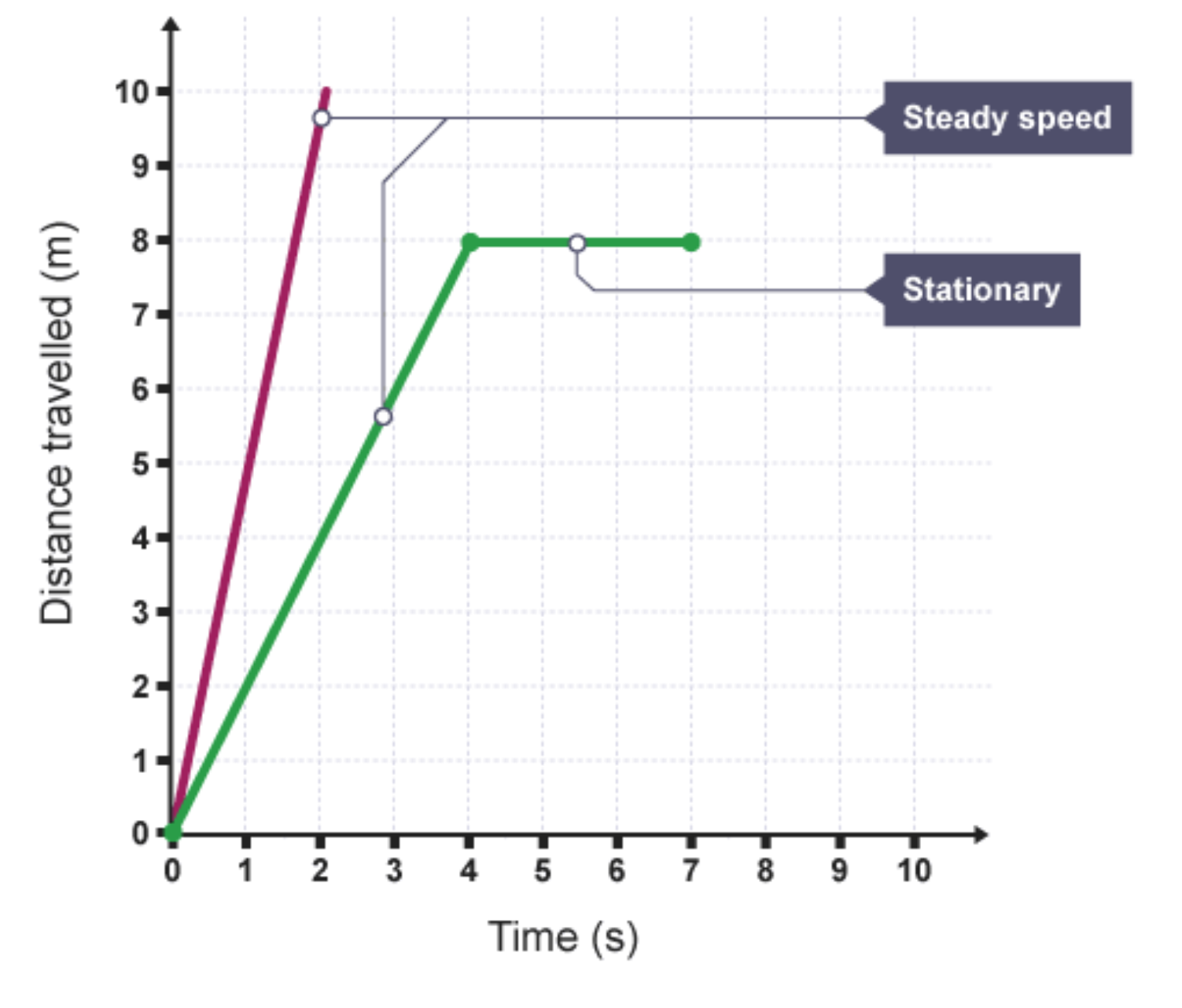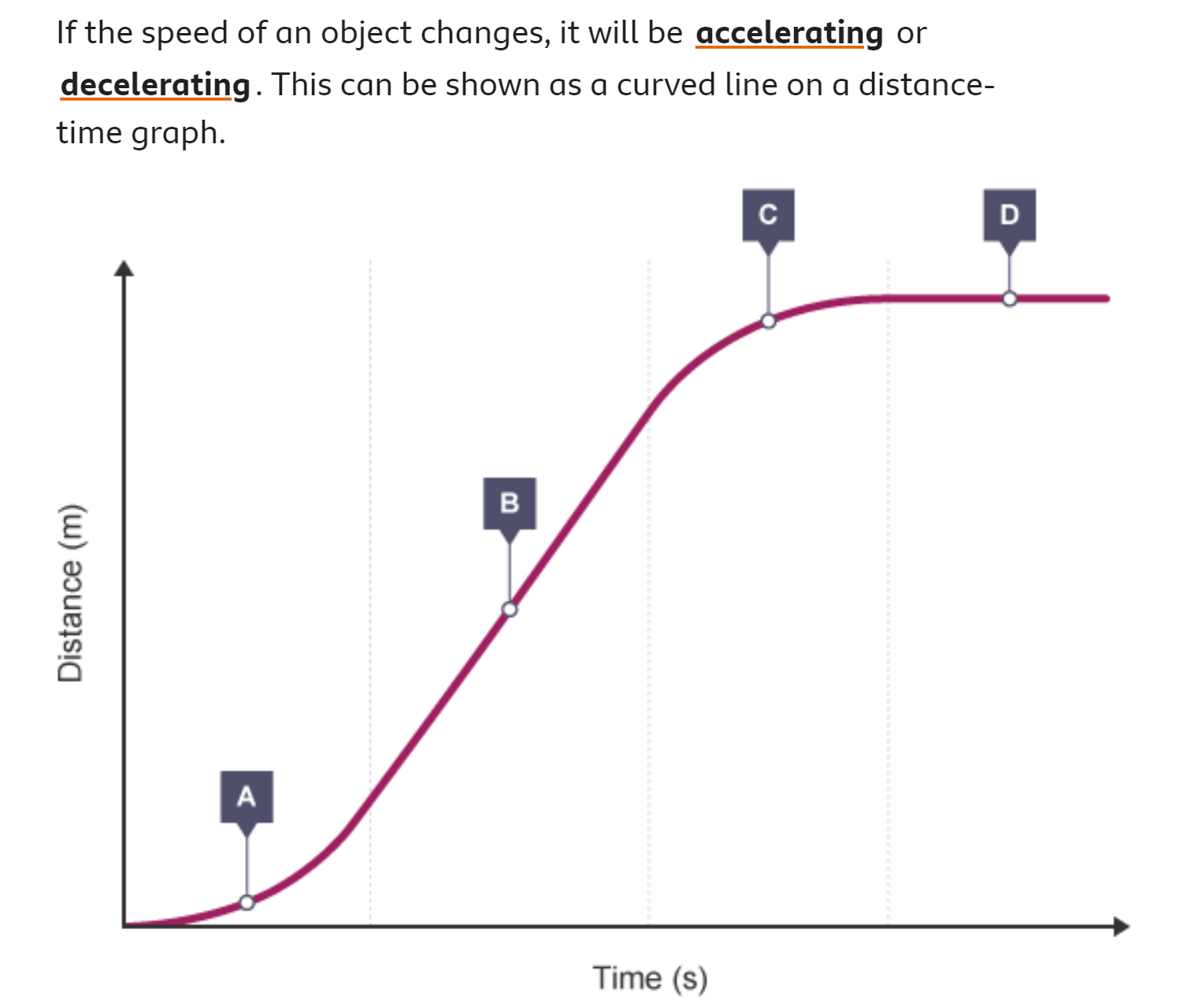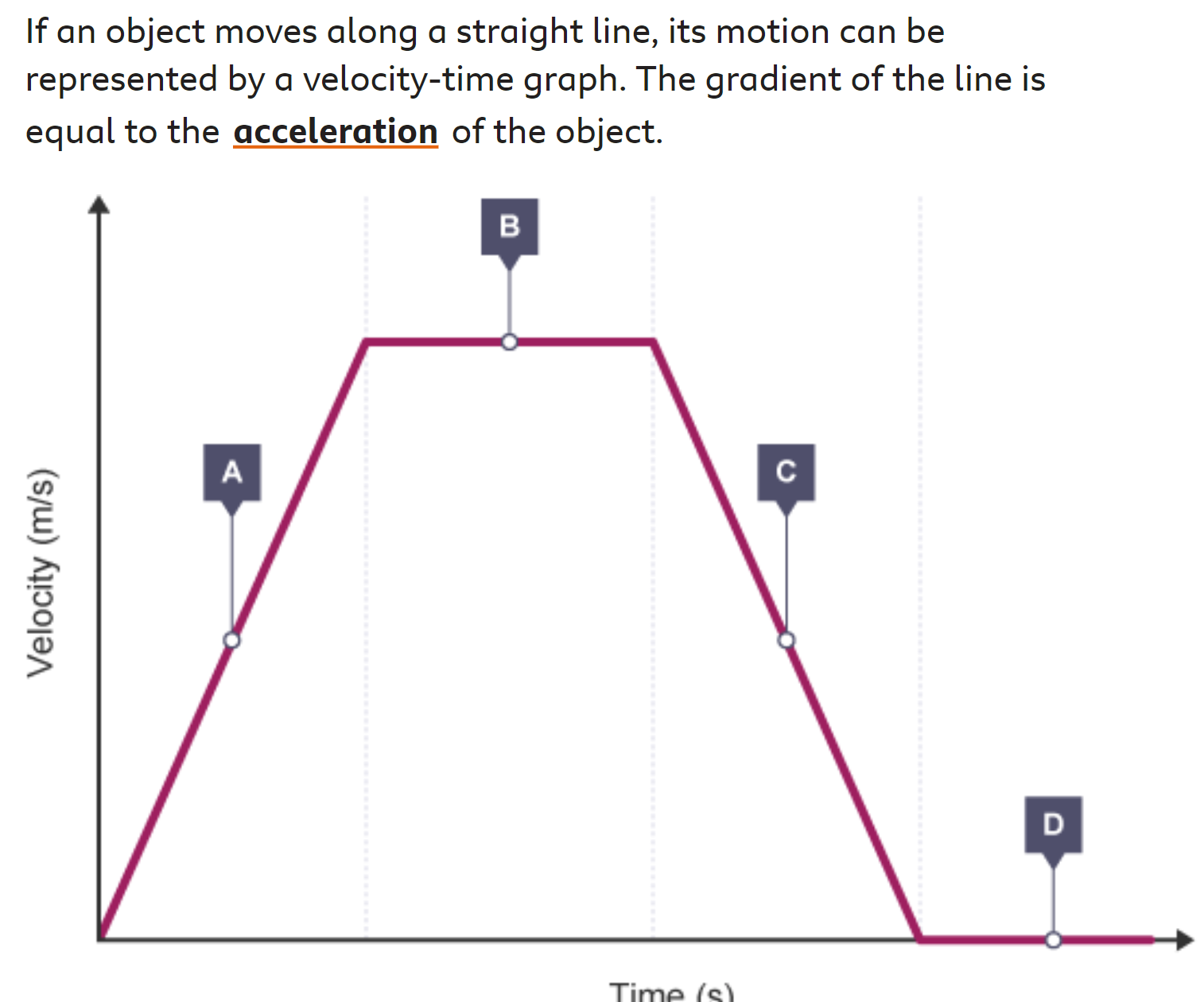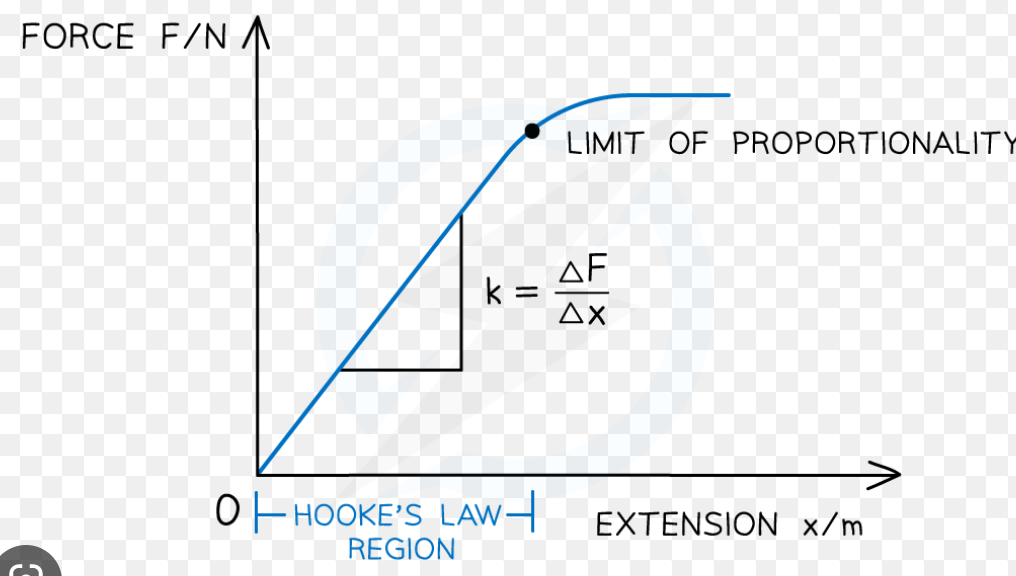Forces and Motion - graphs, Newtons laws, terminal velocity, Hooke's laws, stopping distance
Scalar Quantities: only have a magnitude.
e.g. temperature, distance, mass, energy, speed, density
Vector Quantities: have both magnitude + associated DIRECTION
e.g. velocity, acceleration, force (e.g. Newtons), weight, displacement, momentum
Distance-time graphs

 Velocity-time graphs__
Velocity-time graphs__
The displacement of an object can be calculated from the area under a velocity-time graph.


 Newton’s 1st Law of Motion
Newton’s 1st Law of Motion
If the forces on an object are balanced (no resultant force) then…
- If the object is at rest, it stays at rest.
If the object is in motion, it stays in motion, moving in a straight line at a constant speed.
Newton’s 2nd Law of Motion
If there is a resultant force on an object, it will accelerate in the direction of that force. Could be a change in speed, direction, or both.

Newton’s 3rd Law
“Every force that acts has an equal and opposite force, always.”
E.g. The earth is responsible for the moon’s orbital motion, while the moon is responsible for causing the ocean’s tides.
In a vacuum, objects from the same height will fall at an equal rate. This is because this only force acting on them is gravity. The gravitational acceleration for all objects is the same. In reality, air resistance slows down object’s speed of fall.
Terminal velocity
The sky diver starts with 0 acceleration. At the start, only weight acts on the sky diver. This resultant force causes him to accelerate.
As he accelerates, air resistance (friction) increases to counter this resultant force.
Eventually, the two forces are equal and, with no resultant force, the sky diver travels at a constant speed, called his ‘terminal velocity’.
When his parachute opens, air resistance increases. There is now a resultant force acting upwards, causing him to decelerate.
He decelerates until the two forces are equal… again. He now travels at a constant, but slower, speed, his new terminal velocity.

Thinking + Braking Distance
Thinking distance: the distance a vehicle travels in the time it takes for the driver to apply the brakes after realising they need to stop.
Reaction time varies → tiredness, drugs, alcohol, distractions.
Braking distance: the distance a vehicle travels in the time after the driver has applied the brakes.
Braking distance varies → road conditions (rocky/gravelly), weather conditions (icy/wet), vehicle conditions (worn brakes or tyres).
Stopping distance = thinking distance + braking distance
Hooke’s Law
Extension: when an object increases in length.
Compression: when an object decreases in length.
Force (N) = spring constant (N/m) x extension (m) [f=ke]
Spring constant is a measure of the stiffness of a spring up to its limit of proportionality/spring limit. The higher the spring constant, the stiffer the spring.
- For an elastic object (e.g a spring) the extension is directly proportional to the force applied. For example, if the force is doubled, the extension doubles. The relationship is linear.
- While materials like clay or putty usually show non-linear extension.
Limit of proportionality: the point beyond which Hooke’s law is no longer true when stretching an object.
Elastic limit: the furthest point an object can be stretched while still being able to return to its previous shape.
Past its elastic limit, an object it said to be ‘inelastic’ or plastic.
